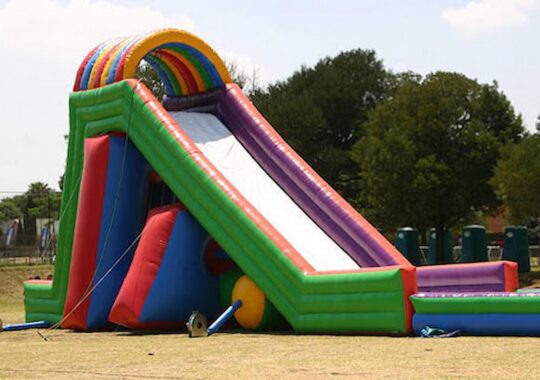In today’s fast-paced world, coffee is more than just a morning ritual; it’s necessary for many. The convenience of takeaway coffee cups means that millions are used and discarded daily. However, improper disposal of these cups can harm the environment. This comprehensive guide will properly walk you through recycling your takeaway coffee cups and highlight why your actions matter.
The Composition of Takeaway Coffee Cups
Takeaway coffee cups are not your average paper cups. Most are lined with a thin plastic or polymer coating layer to prevent leaks and warm your coffee. This lining, often polyethene, makes recycling challenging. Unlike standard paper products, these cups can’t be processed in regular paper recycling streams. Knowing the composition of your coffee cup is the first step toward proper disposal. Check the bottom of the cup for recycling symbols or information on the material to understand better how to handle it.
Rinse and Clean Your Coffee Cup
One of people’s most extensive recycling mistakes is improperly cleaning their items. Takeaway coffee cups that are still filled with coffee or have residue can contaminate the recycling stream, making it difficult for facilities to process them. If possible, rinse out your cup before recycling. This simple step helps ensure that your cup doesn’t negatively impact the recycling process and increases the likelihood that it will be processed correctly.
Check Local Recycling Policies
Recycling practices can vary widely depending on where you live. Before you toss your cup into the recycling bin, it’s crucial to check your local recycling policies. Many communities have specific guidelines for recycling these coffee cups. Some areas have special programs or drop-off points for cups with plastic linings. Visit your city’s recycling website or contact your local waste management facility for accurate information on correctly disposing of your coffee cup.
Utilise Dedicated Recycling Programs
Some cities and companies have dedicated programs for recycling these coffee cups. Major coffee chains like Starbucks and Costa Coffee often have specific recycling initiatives. They may provide dedicated bins for cups at their locations or partner with recycling companies to handle these materials. Take advantage of these programs by placing your cup in the appropriate bins. These programs are designed to handle the unique challenges posed by these coffee cups and often have specialised processes for recycling them.
Explore Alternative Disposal Options
Consider alternative disposal options if your local recycling system doesn’t accept these coffee cups. Some facilities offer specialised recycling services for difficult-to-recycle items. Look for recycling centres or waste management companies focusing on materials like coated paper products. Additionally, some companies are developing biodegradable or compostable coffee cups that are more environmentally friendly. Supporting businesses that use these alternative products can help reduce the environmental impact of these coffee cups.
Adopt Sustainable Habits
The best way to manage takeaway coffee cup waste is to reduce the number of cups you use. Consider adopting sustainable habits, such as bringing your reusable coffee cup to your favourite coffee shop. Many cafes offer discounts or incentives for customers who use their cups, making it a win-win situation for you and the environment. By choosing reusable options, you significantly reduce single-use cup waste and promote a more sustainable lifestyle.
Advocate for Improved Recycling Solutions
Advocacy plays a crucial role in addressing environmental challenges. If you find that your local recycling facilities do not handle these coffee cups or if you’re dissatisfied with the available recycling options, consider advocating for better solutions. Engage with local government officials, community organisations, or environmental groups to push for improved recycling infrastructure. You can also participate in or organise community clean-up events to raise awareness about the issue. By vocalising the need for better recycling solutions, you help drive systemic changes that can lead to more effective recycling processes and more significant environmental impact.
Educate Others About Proper Recycling Practices
Education is critical to widespread environmental change. Share your knowledge of recycling practices with friends, family, and colleagues. Informing others about handling takeaway coffee cups can lead to better recycling habits across your community. Use social media, community newsletters, or local events to spread awareness. The more people know how to dispose of these cups correctly, the more collective impact we can have in reducing waste and improving recycling outcomes.
Support Innovations in Sustainable Packaging
Supporting companies and innovations that focus on sustainable packaging can drive industry-wide changes. Many businesses are now developing new materials for coffee cups that are more environmentally friendly, such as compostable or recyclable options. By buying from companies that prioritise sustainable practices, you encourage more businesses to invest in eco-friendly solutions. Look for certifications or labels on packaging that indicate a product’s sustainability. Your purchasing decisions can promote the development and use of better packaging materials.
Final Thoughts
Properly recycling your takeaway coffee cup may seem small, but it can significantly impact the environment. By understanding the composition of these cups, following local recycling policies, and utilising dedicated recycling programs, you can ensure that your cups are disposed of correctly. Also, sustainable habits like reusable coffee cups can help reduce the waste of single-use items. Every effort counts in the fight against environmental pollution, and your commitment to recycling and sustainability plays a crucial role in protecting our planet.





